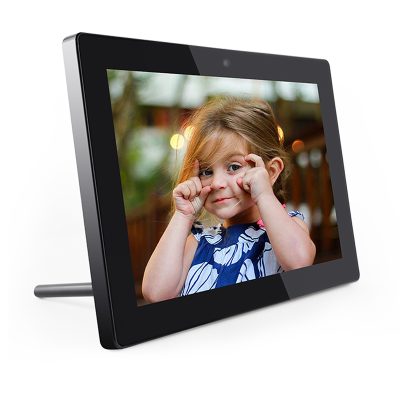Capacitive touchscreens offer several advantages that have made them a popular choice in a wide range of devices, including smartphones, tablets, and many other touch-enabled gadgets. Here are some of the key advantages of capacitive touch screens:
- High Sensitivity and Accuracy: Capacitive touchscreens are highly sensitive and provide precise touch recognition. They can detect even the slightest touch or tap, making them ideal for applications where accuracy is crucial.
- Multi-Touch Support: Capacitive touchscreens can recognize multiple touch points simultaneously. This multi-touch capability enables gestures like pinch-to-zoom, two-finger scrolling, and rotation, enhancing the user experience and functionality of devices.
- Excellent Clarity: Capacitive touchscreens are typically made of glass, which provides excellent clarity and visibility. This makes them suitable for devices with high-resolution displays, such as smartphones and tablets.
- Durability: Glass capacitive touchscreens are durable and resistant to scratches and damage from everyday use. They are also less prone to wear and tear compared to some other touchscreen technologies like resistive touchscreens.
- Fast Response Time: Capacitive touchscreens offer fast response times, ensuring that touch inputs are registered quickly. This quick response contributes to a smoother and more responsive user experience.
- No Pressure Required: Unlike resistive touchscreens, which require physical pressure to register a touch, capacitive touchscreens respond to the electrical properties of the user’s finger. This “light touch” interface is more comfortable and intuitive for users.
- Longevity: Capacitive touchscreens have a longer lifespan compared to some other touchscreen technologies. They are less prone to the wear and degradation that can occur with resistive screens over time.
- Glove-Friendly: Many capacitive touchscreens are designed to work with gloves, which is important for applications in cold or industrial environments where users need to keep their hands protected.
- Low Power Consumption: Capacitive touchscreens consume relatively low power, making them energy-efficient and suitable for battery-powered devices like smartphones and tablets.
- Hygienic: Since capacitive touchscreens do not require physical pressure to register a touch, they are more hygienic and suitable for touch-sensitive environments where cleanliness is essential.
- Wide Range of Sizes: Capacitive touchscreens are available in a variety of sizes, from small screens on smartphones to large interactive displays. This versatility makes them suitable for a wide range of applications.
- Customizable Design: Manufacturers can customize the design of capacitive touchscreens to suit the specific needs of their devices, including screen size, shape, and features.
Overall, capacitive touchscreens offer a superior user experience with their responsiveness, accuracy, and durability. These advantages have contributed to their widespread adoption in consumer electronics and various industrial and commercial applications.















